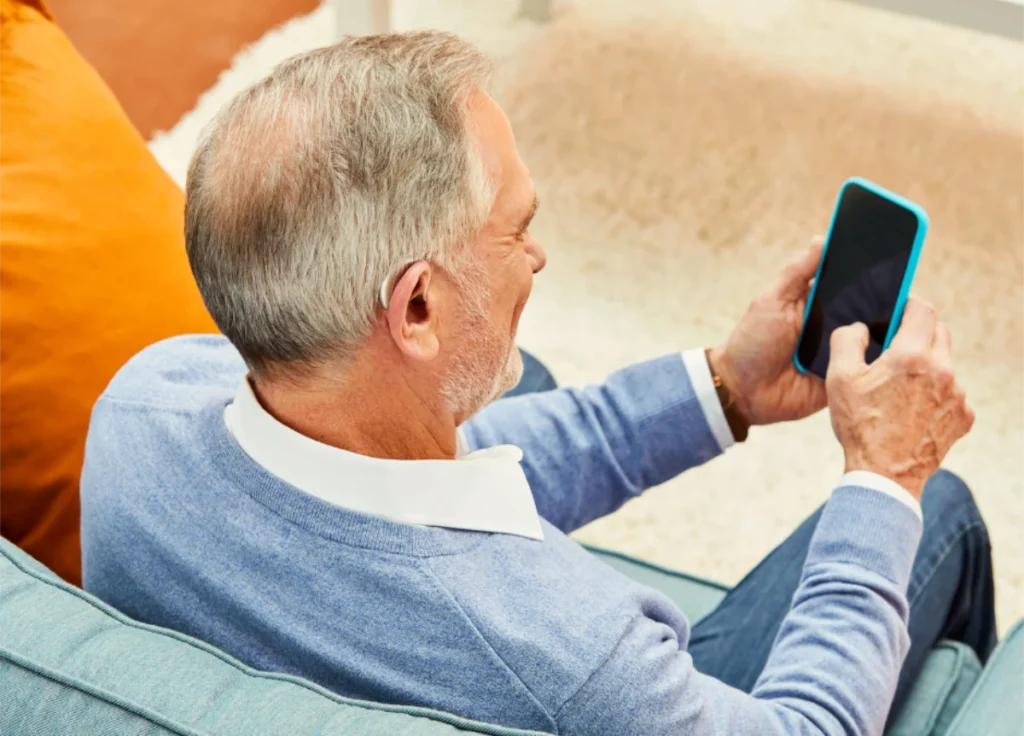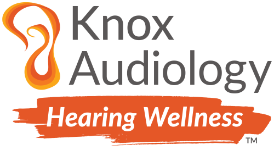The Benefits of Modern Hearing Aids

Since the commercialisation of ear trumpets, hearing amplification devices have come a long way. In the late 1800s, the first electric hearing aid was created by engineer Miller Reese Hutchison. Thereafter, researchers and developers have been employing more technological advancements into the hearing aid, without compensating its size and shape. In recent years, the design of hearing aids is much more discrete, yet the features are constantly improving and expanding. For hearing aid users, this opens the door to many opportunities to cater to their personal lifestyle.
Artificial Intelligence (AI) in Hearing Aids
In response to the growing trend, many hearing aid manufacturers are now leveraging AI to enhance their products. AI is used by manufacturers to develop sound processing algorithms to automatically adjust different settings in the hearing aids to offer optimal sound quality for different listening situations the user is exposed to. In some cases, hearing aids remember preferences from adjustments made in different situations and can apply them the next time the user is in the same environment. This means that hearing aids can offer a personalised listening experience by automatically adjusting to reduce unwanted sounds like background noise, wind, and feedback, providing the user with greater listening comfort. Additionally, they can automatically increase the volume of speakers to improve speech intelligibility, further reducing the effort required to listen.
Recent advancements in this area have introduced a new approach to processing various listening environments. Oticon’s latest hearing aid line, Intent, uses AI to observe and understand the user’s intent in specific listening situations. This allows the hearing aids to adjust the levels of speech and noise processing needed to maximise listening comfort and minimise listening effort. Phonak’s newest model, Audeo Sphere Infinio, has a dedicated AI chip to improve the ability to understand speech coming from any direction in noisy listening situations.
Hearing Aids with Bluetooth
Integrating Bluetooth into hearing aids has introduced a wealth of features that users can easily access and adjust. Modern hearing aids with wireless capabilities can stream audio directly from other Bluetooth devices, such as smartphones. This allows users to listen to music, watch videos, and take phone calls seamlessly. With a simple tap on their hearing aids, users can now pick up or end calls, pause or play streamed audio, and even activate voice assistants.
Some hearing aids are equipped with microphones that detect the speaker’s voice, enabling phone calls to be made without the phone being physically close to the user. This hands-free system not only enhances efficiency but also provides greater privacy for those who prefer it.
For Apple users, there’s an added bonus with the “Live Listen” feature in the phone settings. This function allows hearing aid users to use their iPhone as a remote microphone. By placing the phone in the middle of a group conversation, users can significantly improve speech clarity, making it easier to follow along.
Customising Hearing Aids with Manufacturer Apps
Each hearing aid manufacturer has created their own phone application for hearing aid users to download. These apps may be a more discrete and dexterity-friendly way for those wanting to adjust their hearing aids. Within the apps, the user can adjust the hearing aid volume, change listening programs, check the hearing aid battery, mute the hearing aids, and enhance speech-in-noise clarity. Volume changes may include turning the hearing aids louder, softer, sharper, duller, or even altering specific frequency ranges (low, medium, and high tones). If the users are in a noisy space and have difficulty understanding conversations, many apps provide a speech enhancement feature to dampen the background noise and bump up speech sounds.
Depending on the user’s lifestyle, they may prefer to have more programs for different listening environments for which they can set up in the app. There are programs specifically designed for restaurant enthusiasts, music listeners, TV watchers, lecture or theatregoers, and even those who experience tinnitus. Each of these programs modify the hearing aid’s sound processing to enhance the listening comfort in these situations. For example, car programs are available for hearing aid users who find it difficult to follow conversations in the vehicle. Adjustments can be made by the audiologist to change the microphones’ directionality, allowing optimal listening experience for a driver, front-seat passenger, or back-seat passenger. For many hearing aid users, tinnitus is a common symptom associated with their hearing loss. As such, hearing aid manufacturers have developed tinnitus programs to help mask these internal sounds. This may be white noise or ocean sounds and can be fine-tuned to better suit specific frequencies. Many of these programs can be further adjusted by an audiologist as per the user’s preferences.
Health and Wellbeing Features
Hearing aids are now embedded with features for the health and safety of the wearer. Particularly for the users who may be at risk of falls, hearing aids can monitor and identify the speed at which the person is moving down via motion detection sensors. For binaural users, the left and right hearing aids communicate with each other to help confirm the fall. Automatic alerts, notifications, and/or calls can be arranged following a fall event to ensure the health and safety of the user. Other trackers such as an in-built pedometer and heart rate monitor are also valuable features to help not only the wearer, but also medical professionals view their patient’s activity over a daily, weekly, monthly, or yearly basis. For hearing aid users who may have memory concerns or like to err on the side of caution, these listening devices, like other portable devices, have a location tracking function that can be viewed by the user’s phone app.
For audiologists, an important feature of hearing aids that we use often is datalogging. Hearing aids can detect how long they have been used each day, as well as what type of listening situations the user has been experiencing the most. Similarly, the users can rate their experiences in different environments in real time for a more accurate representation of how they feel the hearing aids are supporting them. This gives the audiologists a very good overview of what listening environments to cater towards for better hearing outcomes.
